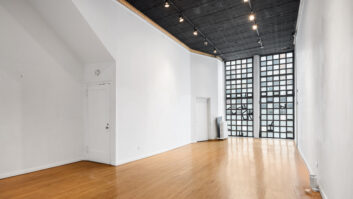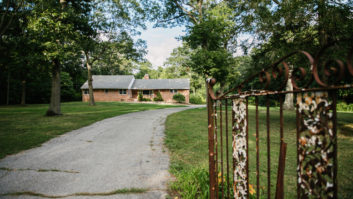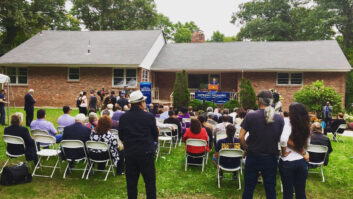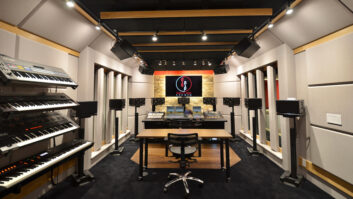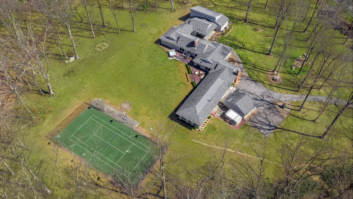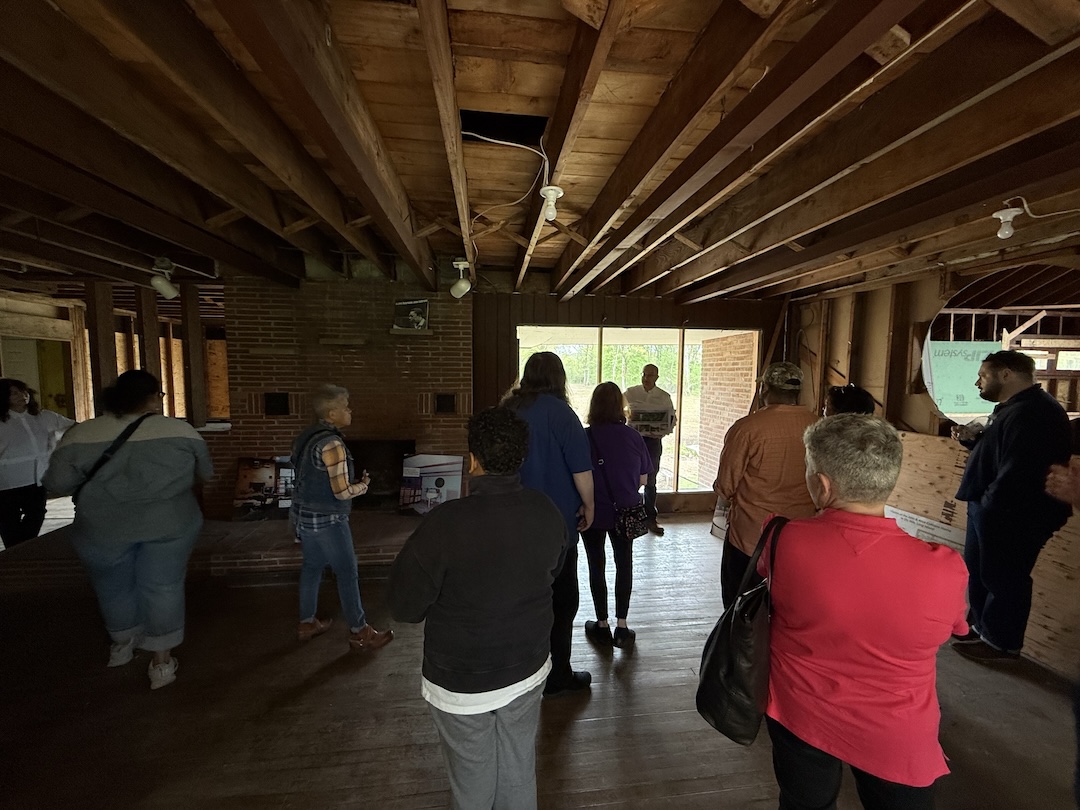
Dix Hills, NY (July 28, 2025)—“Walking into history” is a phrase usually reserved for historic restorations like Colonial Williamsburg, where you buy your ticket and enter a recreation of what the place might’ve been like long ago. You chat with guides in period clothing, read displays about how water mills worked, and hit the tidy gift shop on the way out. They’re clean and safe, and for all the fun you have pretending you’re in the 1700s, you still get to benefit from anachronisms like restrooms with running water.
Recently I had the chance to walk into a rarely seen music history site, and it was pretty much the exact opposite: It was grubby, it was only in the process of becoming safe and no, there were no restrooms. History is not sanitized for your protection; in truth, it’s usually pretty messy and there’s lots of rough edges. Even preserving history so that new generations can learn from it requires cleaning it up a bit and turning it into something that people can wrap their heads around. Sometimes that means making guides wearing colonial garb; in my case, it meant asking visitors to watch their step as they used wobbly, makeshift stairs—loose cinder blocks stacked on dirt—to enter a construction site.
The event was a one-off “Preservation in Progress” tour and the place was The Coltrane Home. A virtually unknown landmark of music and recording history, the house has been quietly undergoing a gutted-to-the-studs renovation for the last 20 years in order to save the place from collapsing; in 2026, it will finally open to the public as a museum/arts center.
If you’ve never heard of the Coltrane Home, you’re not alone. In 1964, legendary jazz saxophonist John Coltrane bought the place—a 1952 suburban house in the toney neighborhood of Dix Hills, Long Island—and lived there with his family until he died suddenly from liver cancer in 1967 at age 40.
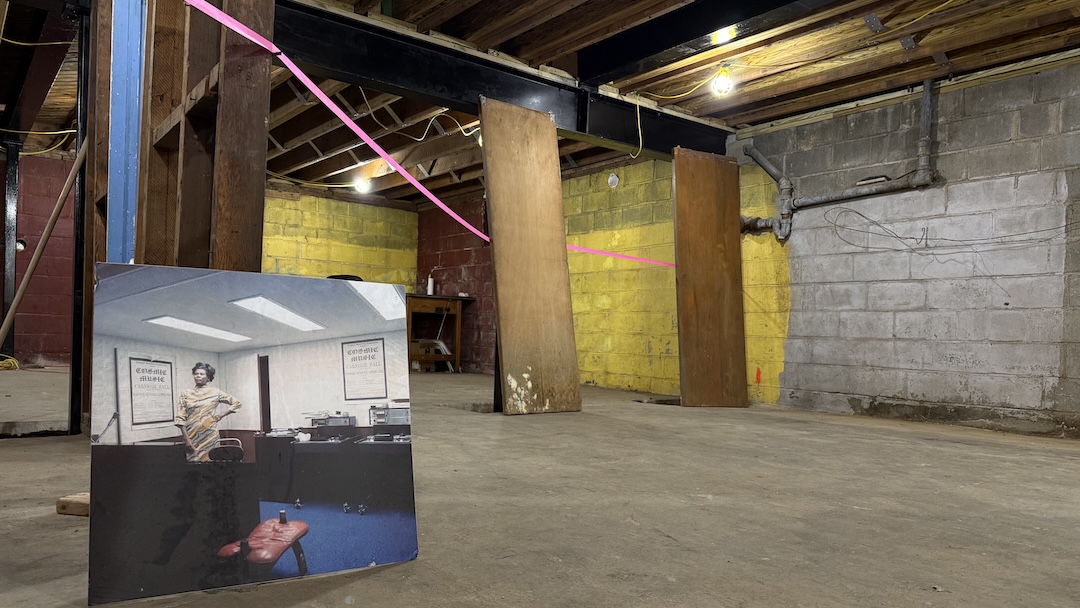
Those three years were a happy, creative time for Coltrane, however. It was there that he wrote his masterpiece, A Love Supreme, in a spare bedroom on the top floor. A few floors down, he and his wife, Alice, a well-regarded multi-instrumentalist in her own right, designed and built a professional studio with extensive soundproofing, a glass-walled control room and, out of necessity, an entrance through the garage where Coltrane kept his prized white Jaguar XKE. It was a studio that would eventually host other jazz greats like drummer Ben Riley, bassists Cecil McBee and Charlie Hayden, and saxophonists Joe Henderson and Pharaoh Sanders. It was a studio that Coltrane himself would not live to see.
Alice did, however, and she put it to good use; suddenly a widow with three toddlers, she used the studio as a means to provide for her family, recording albums there for Impulse! Records while staying home with her kids. Ultimately, however, Alice sold the house in 1973 and moved on to California.
Given the surroundings—a well-to-do neighborhood and a leafy, three-and- a-half-acre lot—it would be fair to expect the house to remain in pretty good shape. That’s not what happened, however; instead, it passed through several owners and was rented out to college students for decades, steadily deteriorating until it had to be boarded up. Sold to a developer in the early 2000s, the house was just days from being demolished when local music buff Steve Fulgoni alerted local officials what was about to be lost.
It was hard to tell if anything could be saved, however—the interior was covered in mold; the foundation was literally crumbling and there were holes in the roof. Still, the town bought the property, and a volunteer group took on the challenge of saving the house. Today, even after decades of slow restoration (obtaining grants takes time), the inside is still mostly bare framework, and everyone on the tour was advised that for now, the top floor can only bear the weight of a few visitors at a time.
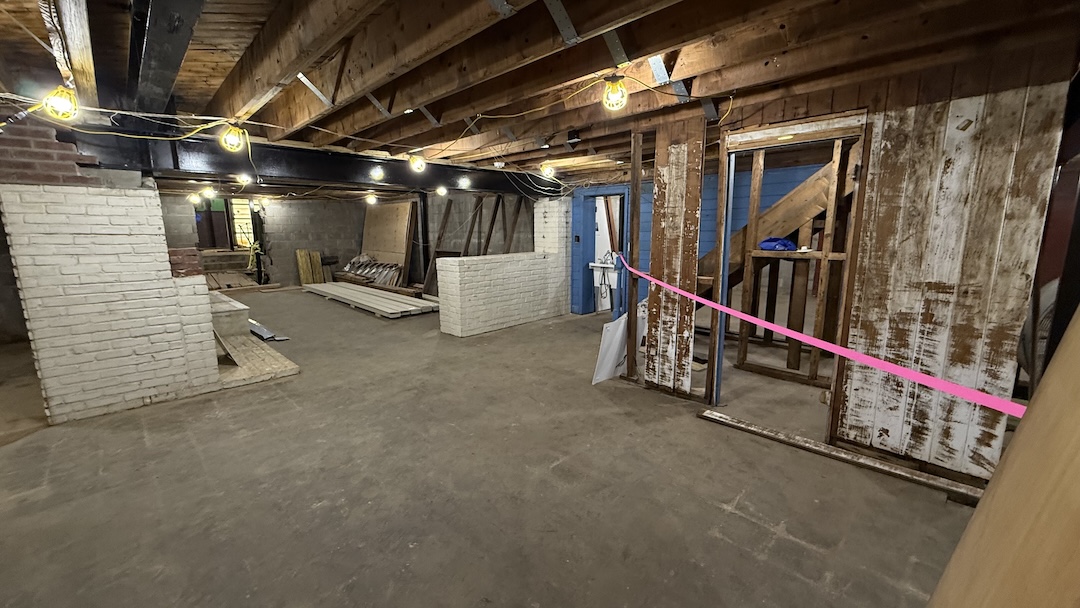
That and many more issues will be remedied by the time it opens to the public. The Coltrane Home will house a museum, hold classes in the family’s massive meditation room, host performances and more. The studio will be restored, too, and while it will look much as it did when John Coltrane lived there, it will be a modern DAW-based facility. However, the entire basement floor must be dug out first to add some headroom—during renovation, massive steel beams had to be added to the ceiling to support the house above, making walking around without smacking your head nearly impossible.
Discover more great stories—get a free Mix SmartBrief subscription!
On the outside, the house looks like any other on the block, but it has very clear ties to not only music history but also black history, women’s history, local history and, thanks to that studio, audio history. Of course, the pro audio industry has always had a healthy respect for history, too, even as it continues to look to the future. The urge to create something new out of what has come before has long been one of the most inspiring qualities of this industry, and the Coltrane Home embodies that spirit, too. No doubt when it finally opens to the public, we’ll write about how they did it, and how they plan to help new generations walk into history, too.
—Clive Young, Co-Editor
